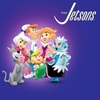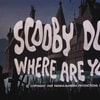

Charlie and the Chocolate Factory is a 1964 children's book by British author Roald Dahl. The story features the adventures of young Charlie Bucket inside the chocolate factory of eccentric chocolatier Willy Wonka.
Charlie and the Chocolate Factory was first published in the United States by Alfred A. Knopf, Inc. in 1964 and in the United Kingdom by George Allen & Unwin in 1967. The book was adapted into two major motion pictures: Willy Wonka & the Chocolate Factory in 1971, and Charlie and the Chocolate Factory in 2005. The book's sequel, Charlie and the Great Glass Elevator, was written by Roald Dahl in 1972. Dahl had also planned to write a third book in the series but never finished it.
The story was originally inspired by Roald Dahl's experience of chocolate companies during his schooldays. Cadbury would often send test packages to the schoolchildren in exchange for their opinions on the new products. At that time, Cadbury and Rowntree's were England's two largest chocolate makers and they each often tried to steal trade secrets by sending spies, posing as employees, into the other's factory.

Rankings
SEE ALL RANKINGS
#3
OF 111
#12
OF 54
#20
OF 271
#34
OF 329
#38
OF 437
Help Topic: What do these scores mean?
Books
Films
why?


Animated | 1994 | Budget $45M | Box Office $763M
Matthew Broderick, Jeremy Irons, James Earl Jones
why?


Family | 1965 | Budget $8.2M | Box Office $286M
Julie Andrews, Christopher Plummer, Eleanor Parker
why?


Animated | 1989 | Budget $40M | Box Office $211M
Jodi Benson, Pat Carroll, Christopher Daniel Barnes
People
Fictional Characters
TV
why?


ABC | Animated | 1969 - 1978 | Ended | 3 Seasons | 35 Episodes
Don Messick, Frank Welker, Casey Kasem
why?


Cartoon Network Asia | Animation | 2023 | Ended | 1 Season | 7 Episodes
Tom Kenny, Rick Zieff, Gary Cole
why?


ABC | Animated | 1960 - 1966 | Ended | 6 Seasons | 167 Episodes
Alan Reed, Jean Vander Pyl, Mel Blanc
why?


PBS | Animated | 1994 | Ended | 4 Seasons | 52 Episodes
Lily Tomlin, Danny Tamberelli, Daniel DeSanto
why?


SYN89 | Animated | 1962 - 1987 | Ended | 3 Seasons | 75 Episodes
George O'Hanlon, Penny Singleton, Janet Waldo
why?


DXD | Animated | 1988 - 1991 | Ended | 4 Seasons | 50 Episodes
Jim Cummings, Paul Winchell, John Fiedler
why?


SYN89 | Animated | 1987 - 2022 | Ended | 3 Seasons | 114 Episodes
Alan Young, Russi Taylor, Chuck McCann
why?


BBC1 | Adventure | 2010 - 2017 | Ended | 4 Seasons | 14 Episodes
Benedict Cumberbatch, Martin Freeman, Andrew Scott
why?


YouTube | Kids | 2018 - 2020 | Returning Series | 3 Seasons | 19 Episodes
Casey Kasem, Don Messick, Heather North
why?


FOX | Animated | 1989 - 2025 | Returning Series | 36 Seasons | 793 Episodes
Dan Castellaneta, Julie Kavner, Nancy Cartwright
Music
Brands & Products
Games
Comics
Sports
Audience Affinity
Culture
419
Fantasy Movies
200
Sci-fi & Fantasy
184
Family & Children Movies
55
Children's TV
55
Women's Lifestyle
23
Lifestyle
23
Celebrity
-10
Art
-12
Anime Movies
-21











































































































